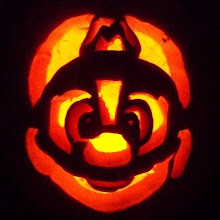
Star Wars Episode IV: A New Hope
1977
In the Summer of ‘77 came the mind-blowing steampunk science-fantasy that jump-started even adults’ imaginations and changed the face of filmmaking forever. It introduced a world where machines, monsters and magic coexist, where each planet is covered in a single terrain, and where the terrorists are the good guys. It’s a nonstop mix of art and entertainment. There isn’t a dull moment! It’s the most fun I’ve ever had watching a movie, and even after seeing it over a dozen times, I still notice new things, like that cool pattern painted on Luke’s kitchen ceiling. There are so many highlights, everyone has a different “favorite scene.” Audiences came back to see it in theaters again and again -- the replay value is endless, making it ideal for nerd trivia (no one can beat me at Star Wars Trivial Pursuit). The film smashed every box office record of the time and won 7 Academy Awards. I’ll never forgive the Academy for giving Best Picture, Director and Screenplay to Annie Hall instead. INFIDELS!

Though the film is a hybrid of sci-fi and fantasy, it always felt more like a fantasy film to me. It’s set in the past and in another world, as opposed to the future of our world. There’s magic (The Force), an endless variety of creatures, and the characters are all based on mythological and traditional archetypes: Obi-Wan Kenobi is a mix between a wizard and a samurai, Luke is the young apprentice, Darth Vader is the dark overlord, Leia is the princess, Han Solo is a pirate/cowboy, Chewie is the sidekick/heavy, and the droids, C-3PO and R2-D2, are the comic relief. Man, Lucas really has a knack for great names. Look at how ridiculous yet unforgettable each of those names are. I don’t know how he comes up with them -- aside from Luke Skywalker (Luke S./Lucas, get it?).

The Star Wars universe really feels expansive. The characters frequently reference planets, creatures and events that we never see. We only see the surface of two planets in the first film (three if you count the metallic Death Star), and yet we already get the sense that there are hundreds if not thousands more. We also get a great sense of the universe’s history. The characters speak of their ancestors, past wars and overthrown governments. All the sets on Tattooine look old, dirty and rusty, which make them feel really genuine, unlike all the other clean, shiny sci-fi films of the era. Also atypical was the film’s music. Most sci-fis pre-Star Wars had electronic, synthesized soundtracks, but Lucas wanted John Williams to write a classical score instead. Boy, did he ever! The A.F.I. voted the soundtrack the greatest film score of all time, and I whole-heartedly agree.

The elaborate special effects were amazing for their time. Some of it is still stunning today, particularly the unmatched climactic space battle, whereas other effects are a bit dated. The first lightsaber battle is pretty tame by today’s standards. The choreography is basic, the sabers look flat -- more like a real sword than the now-traditional look -- and there’s that awkward revealing moment where Obi Wan’s saber disappears (maybe his batteries were running low). But you have to keep in mind it was in fact the first lightsaber battle ever, so at the time, just seeing the frame-by-frame rotoscoped sabers and hearing those buzzing hums and static clashing sound effects were more than enough to evoke awe and wonder. Also note that the duel is between two old men, one of them half-machine. I’m surprised they don’t take a break to catch their breath. Despite some wrinkles, I still think the film has aged extremely well because of how strong the cinematic storytelling is. It wisely put the characters and story first. Thus, when the Death Star blows up like a low-budget popcorn poof in the end, I’m so into the movie that I cheer instead of laugh.

Lucas, on the other hand, disagrees with me. So dissatisfied was he with the film’s oldschool effects, he returned multiple times to add computer-graphics to the original trilogy! But we’ll get into that later. The New Hope DVD commentary is basically him lamenting nonstop about how frustrating the tools of the time were. For example, he painfully recalls how the Banthas were created by putting costumes on elephants, and wishes he could have created them digitally instead. Personally, I think oldschool tricks like that are brilliant. I prefer seeing the filmmakers resort to creative, hands-on techniques like costumes, puppets and stop-motion as opposed to letting a computer do all the work. I love seeing only the fossil of the krayt dragon in the desert, only the stilt-like legs of that towering Quor’sav in the foreground of Mos Eisley, and only the eyeball and tentacles of the Dianoga in the trash compactor. It’s like seeing the universe through a keyhole, which really sparks the imagination. Modern films are so square. Old movies are like triangles, only showing you half the square, inviting you to complete the shape. It’s an interactive experience that I greatly prefer. The Force is the most creative use of magic I’ve ever seen on film. The characters use it in so many different ways: telekinesis, telepathy, precognition… and most of these abilities are accomplished with simple, low-budget techniques that require nothing more than successfully mind-tricking the audience. What Lucas regards as the film’s greatest weakness is, in my opinion, the film’s greatest strength. 5/5 stars.
Click here for my review of The Empire Strikes Back: But beware of the dark side...

No comments:
Post a Comment